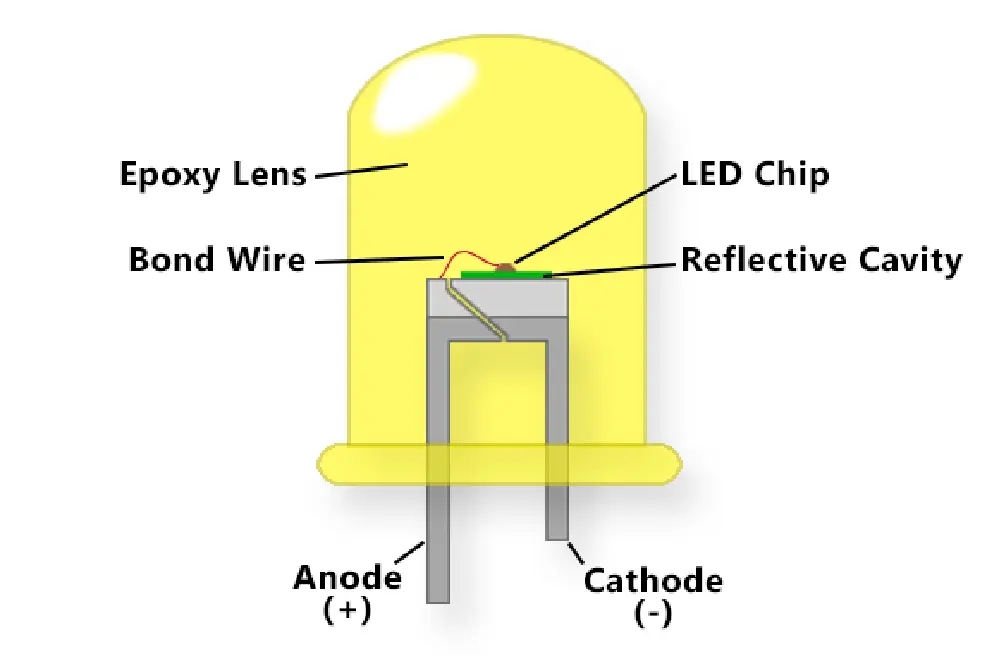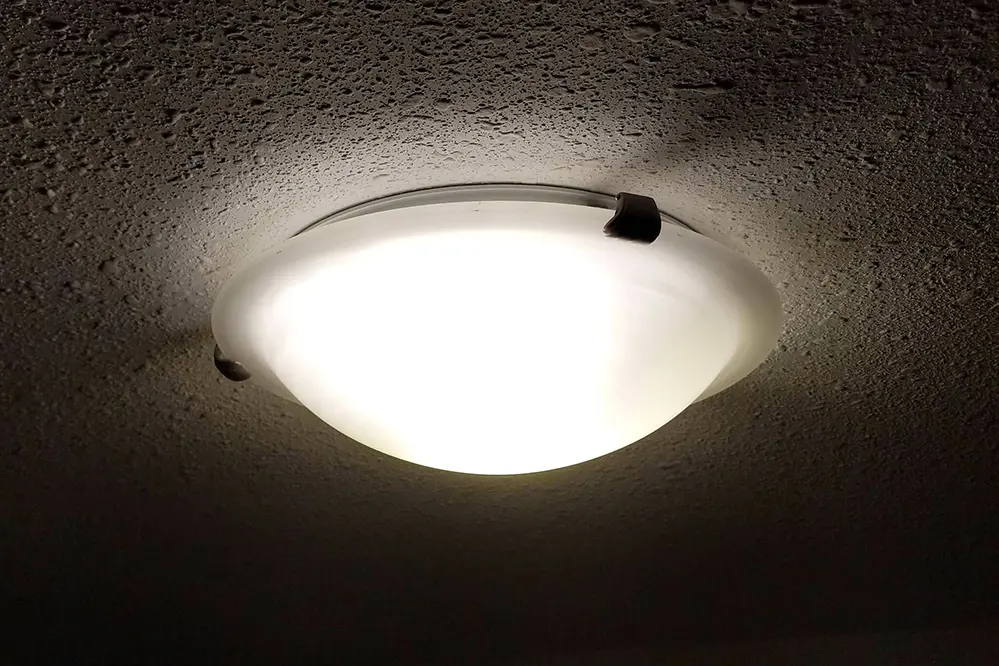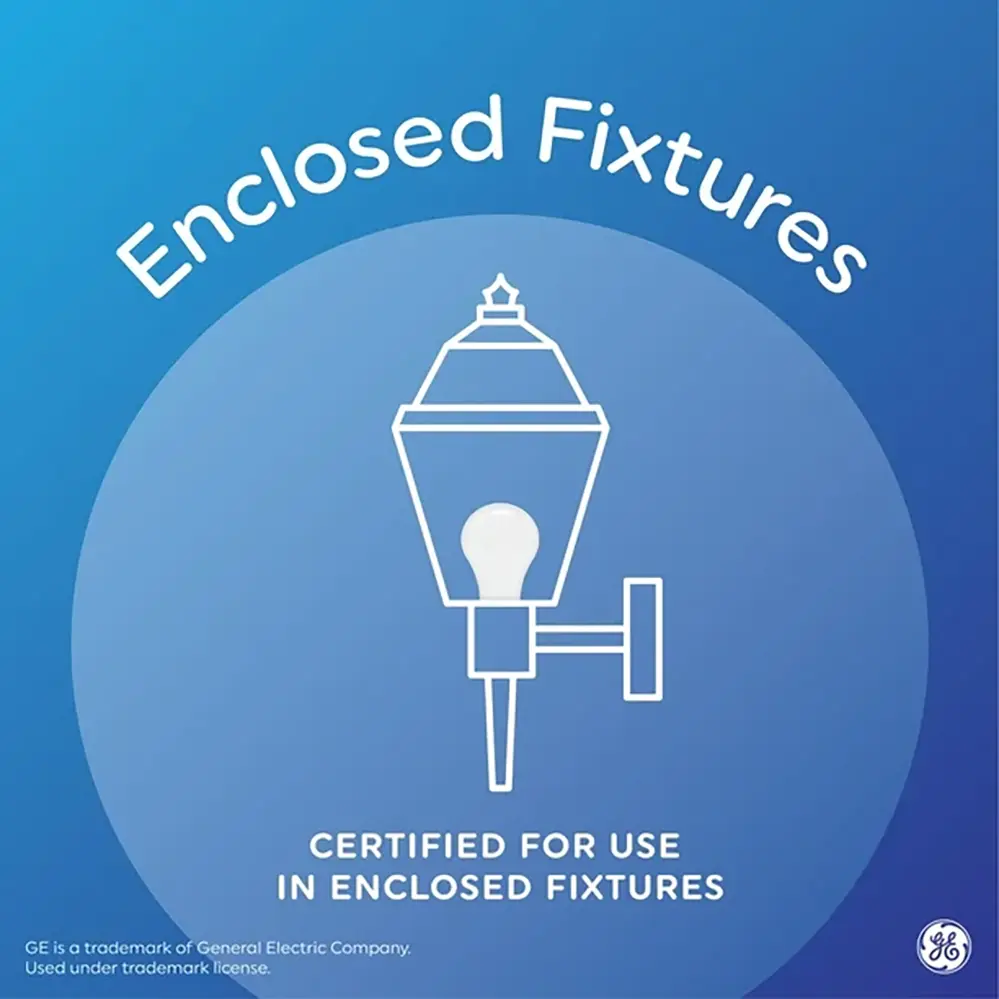In the ever-evolving world of lighting technology, LED lights have emerged as a popular choice for their energy efficiency and longevity. However, many homeowners and businesses alike are left wondering about their compatibility with enclosed fixtures. If you’re seeking clarity on this topic, you’ve come to the right place.
LED lights can be used in enclosed fixtures if they are specifically designed for such use. It’s crucial to choose LEDs labeled as “enclosed fixture rated” to ensure safety and optimal performance.
Curious about the benefits and potential risks of using LED lights in enclosed fixtures? Continue reading to discover expert insights and practical tips to illuminate your space safely and effectively.
Understanding LED Lights

LED lights, a beacon of modern technology, illuminate our world with profound efficiency and brilliance, transforming mundane environments into vibrant spaces. Their dynamic capabilities symbolize innovation in lighting technology.
LEDs, or Light Emitting Diodes, are the cornerstone of contemporary illumination.
These small, solid-state wonders have redefined the lighting industry with their versatility and longevity.
Operating on semiconductor principles, LEDs offer unparalleled energy efficiency and durable performance, rivaling conventional electronics and lighting options.
A testament to human ingenuity, they consume significantly less power, reducing carbon footprints while delivering consistent light output. This innovation marks a pivotal leap towards sustainable illumination.
Thus, embracing LED technology isn’t merely about adopting new lights; it’s about reimagining what’s possible. It’s time to explore how they can revolutionize our approach to enclosed fixtures confidently.
What Are Enclosed Fixtures?

Enclosed fixtures encompass a wide array of light fittings designed to encase and protect the light source completely, ensuring that every component is secured.
These fixtures are prevalent in settings where harsh conditions could harm the lighting element.
Enclosed fixtures typically utilize glass, plastic covers, or even traditional incandescent bulb designs, ensuring LEDs remain intact in a variety of settings that demand safety, functionality, and protection from dust or moisture, providing an ultimate shield against external factors.
The primary function of enclosed fixtures extends beyond mere protection, serving as a harmonizing element that integrates seamlessly with the architectural design of numerous environments, all while maintaining optimal light performance. These structures, sometimes known as “cans,” fortify the functionality and aesthetic of lighting installations.
Risks of Using LED Lights in Enclosed Fixtures
When considering the retrofit of LED lights in enclosed fixtures, it’s crucial to understand potential risks, which may affect efficiency and lifespan.
Overheating can cause LED lights to deteriorate more quickly.
LEDs are crafted with advanced technology to operate efficiently, yet enclosed environments can pose challenges. Limited airflow within enclosed fixtures can trap heat, overextending the LED’s components and affecting brightness, performance, and longevity.
The greatest challenge arises from heat, as LEDs are not inherently heat-tolerant. If subjected to a continuous cycle of elevated temperatures, their electrical parts may degrade faster, risking premature failure. To mitigate such risks, adhere to manufacturers’ specifications and select LEDs designed explicitly for enclosed fixtures. Embracing this proactive approach not only ensures safety but also optimizes performance and illuminates the path to a more enlightened future.
Can LED Lights Be Used in Enclosed Fixtures?
Yes, LED lights can indeed be used in enclosed fixtures, but there are considerations to keep in mind to ensure optimal performance and longevity.
It’s essential to choose LEDs specially designed for enclosed fixtures to avoid overheating issues.
These specially engineered LEDs come equipped with robust heat management solutions and dimmers that allow them to thrive in environments where space is limited, such as enclosed fixtures, thus maintaining their brightness, efficiency, and durability.
Manufacturers often label these as “enclosed-rated,” a testament to their ability to withstand confined conditions. By opting for such products, you not only contribute to enhanced sustainability but also illuminate your surroundings with confidence, fostering both safety and innovation in every glowing moment.
Heat Management in LED Bulbs
LEDs’ heat management systems, a marvel of engineering ingenuity, make them viable even within enclosed fixtures. Advanced materials and technologies enable heat dissipation, allowing these lights to maintain optimal function, casting radiant brightness without succumbing to damaging thermal buildup.
Importance of Heat Dissipation
Ensuring effective heat dissipation is essential in maintaining the longevity and performance of LED lights.
Efficient heat dissipation extends an LED’s lifespan, with some lasting up to 25,000 hours longer.
Proper heat management allows LEDs in enclosed fixtures to operate safely and effectively, harnessing the benefits of energy efficiency without the risk of overheating. Astute engineering advancements have pioneered solutions that disperse heat efficiently, ensuring consistent illumination.
Beyond enhancing durability, effective heat dissipation supports continuous brightness—crucial for enclosed environments—thus optimizing energy consumption and reducing maintenance costs significantly over time.
Potential Overheating Issues
The innovative nature of LED lights offers remarkable opportunities, yet overheating may occur in enclosed fixtures, posing a challenge to conquer.
Ventilation and space limitations in enclosed fixtures can restrict cooling potential.
When an LED is considered for use within such environments, attention must be paid to a myriad of factors to ensure a measured balance of heat management and light efficiency, preventing, mitigating, and addressing any overheating concerns.
In this endeavor, knowledge and forward-thinking technologies are fundamental in shaping solutions that minimize the risk to LED performance. Passive cooling solutions, for instance, such as “heat sinks,” effectively address these challenges. With steadfast resolve, inventors continue to conquer obstacles, pushing boundaries to craft LEDs that harmonize with even the most confined environments, all while maintaining their captivating brilliance.
Selecting the Right LED Bulbs
Choosing the ideal LED involves understanding heat-resistant options designed for enclosed spaces, ensuring longevity and efficiency.
To do this, look for bulbs with an enclosed fixture (EF) rating to optimize performance, which are engineered to withstand restricted airflow and dissipate heat effectively.
Terms like “enclosed-rated” and “non-enclosed” are instrumental in guiding the perfect selection.
Looking for Enclosed-Rated LEDs

When you embark on the journey of selecting enclosed-rated LEDs, understanding product specifications and features is paramount. These LEDs are designed to operate within the seemingly restrictive confines of enclosed fixtures, ensuring they remain cool and functional.
It’s crucial to ensure these bulbs specifically advertise compatibility with enclosed spaces.
In your quest, seek out labels or certifications indicating an LED’s suitability for enclosed fixtures; these markers can give you confidence in the bulb’s ability to perform optimally. Be aware that not all LEDs make the cut, highlighting the importance of detailed inspection, verification, and dedication to finding the ideal match.
The process of discovering enclosed-rated LEDs requires attention to both the specifications and technological innovations that have allowed them to thrive under these conditions. As you peruse options, look for terms like “enclosed fixture rated” or “suitable for enclosed spaces,” and never hesitate to delve into manufacturer details. By doing so, you invite an era of bright, efficient, and resilient lighting solutions into your home or workplace, inspiring efficiency and sustainability like never before.
Checking Manufacturer Guidelines
Delving into manufacturer guidelines is essential when choosing LED lights for enclosed fixtures. This documentation provides insights into the specific constraints and compatibility of LED bulbs.
Look for prominently displayed information regarding the heat tolerance and overall performance of LEDs in confined spaces. This data often underpins the bulb’s efficacy and longevity.
Most manufacturers include details that will assist in determining the appropriate LED for an enclosed fixture. These encompass factors such as wattage, thermal management, and recommendations for temperature control.
Consulting these guidelines ensures you are equipped with the knowledge to maximize efficacy and lifespan. These details, marked as “critical,” often include usage tips for maintaining optimal performance. By prioritizing this step, you align with cutting-edge technology, setting a new standard for efficiency and resilience.
Energy Efficiency Considerations
When pondering, “can LED lights be used in enclosed fixtures,” energy efficiency is a key consideration.
In 2023, energy-conscious trends, advancing technology complemented by logistical proficiency, significantly shifted how we perceive LED use in enclosed spaces within homes, offices, and industries.
Now, it’s no mere accident that LED lighting’s evolution presents itself as a paragon of energy-saving technology, distinctly improving the power consumption benchmarks and redefining luminosity standards.
Amid this evolution, the integration of LEDs within enclosed spaces isn’t just practical—it’s a testament to the 3Rs: reduce waste, enhance energy usage, and bolster innovation pathways, offering inspiring solutions to age-old lighting dilemmas.
An intuitive leap is borne from this energy equation, promising groundbreaking advancements to embolden your green initiatives.
Cost Benefits of LED Lighting
LED lighting not only revolutionizes the way we illuminate spaces but also transforms economic dynamics, streamlining costs while delivering exceptional performance.
Optimizing their pricing empowers homeowners and businesses alike to save considerably.
This shift not only enhances sustainability but also provides a remarkable return on investment in a myriad of settings. The reduced energy consumption coupled with longevity ensures a balance of cost-efficiency, reliability, and implementation ease.
The financial landscape associated with LED lights becomes even more favorable, as their extensive lifespan translates to fewer replacements and lower maintenance costs. By choosing LED solutions, stakeholders will likely see “bright” future savings, maintaining a lit path toward both economic growth and environmental sustainability.
Environmental Impact of LEDs
LEDs dramatically reduce the environmental footprint of lighting solutions by minimizing energy consumption and waste generation, which play pivotal roles in climate preservation.
The energy-saving prowess of LEDs must not be underestimated.
Compared to traditional lighting, LEDs require less power to function, reducing the demand for electricity and subsequently decreasing carbon emissions from power plants. This contributes significantly to mitigating global warming effects.
Furthermore, LEDs do not contain harmful substances like mercury, used in fluorescent lights, which require special disposal methods. As such, LED technology supports cleaner production standards and diminishes hazardous waste, lighting the way toward a sustainable, eco-friendly future. By embracing LEDs, we underscore a commitment to innovation that nurtures both economic prospects and ecological integrity.
Extending LED Bulb Lifespan
Longevity remains a hallmark of LED technology.
Indeed, simple measures can extend an LED bulb’s life. The first method is ensuring proper air circulation in enclosed fixtures, which is of paramount importance to prevent overheating that can degrade LEDs. Additionally, adherence to the wattage restrictions set by manufacturers reduces stress, thus prolonging the bulb’s lifespan.
Avoid installing LED bulbs in non-ventilated fixtures.
Also, consider utilizing bulbs rated for damp or enclosed spaces. These LEDs are designed to withstand the lack of airflow typical of such environments, ensuring reliability and continued performance.
As exceptional technological advancements continue to reshape lighting solutions, it’s imperative to adopt optimal usage strategies for LED bulbs. Savvy choices not only reflect well on environmental stewardship but also align with the elevated expectations of LED longevity, ensuring your lighting investments remain economical and sustainable in the long run.
Common Mistakes in LED Usage
Navigating the transition to LED lighting can be seamless, yet a common oversight is choosing the wrong bulb for specific applications, undercutting their unparalleled efficiency.
A frequent blunder involves using non-compatible bulbs in enclosed fixtures.
Notably, incorrect bulb selection can lead to overheating or suboptimal performance (especially when non-enclosed-rated LEDs are used).
Additionally, users may overlook manufacturer instructions regarding voltage and wattage requirements, jeopardizing bulb longevity.
Ignoring the environmental adequacy of LED installations can lead to ineffective energy consumption, diminishing the extensive advantages these sustainable lighting options offer, sidestepping both economic and ecological benefits.
Ultimately, the art of optimal LED usage lies in details. Thoughtful attention to installation nuances is paramount to unlocking the full capacity of this dynamic technology.
Alternatives to Enclosed Fixtures
Exploring the realm of versatile lighting solutions, open fixtures present a brilliant alternative to enclosed settings, offering an expansive space for heat dissipation while enhancing the aesthetic of any environment.
Such configurations allow for the seamless integration of LED lighting without the concerns implicit in more restrictive settings.
Unquestionably, open fixtures enable higher lumen outputs, minimizing energy consumption and extending the lifespan of your LED bulbs.
Pendant lights serve as decorative open fixtures, channeling light distribution effectively across diverse spaces—transforming ambiance effortlessly.
Furthermore, wall sconces offer aesthetically pleasing options, providing both functionality and flair, nurturing a welcoming atmosphere in hallways and living spaces, capturing the harmony of brilliant design with energy efficiency.
Ultimately, diversifying your lighting design doesn’t halt at replacing enclosed fixtures. Creative approaches flourish in open environments where LED innovation truly shines.
Conclusion: Final Recommendations for Safe Use
In summary, LED lights can be used in enclosed fixtures, but caution is advised, as the right conditions are necessary to ensure optimal performance.
Ensure compatibility between the LED bulb and the fixture specifications.
Importantly, choose bulbs rated for enclosed fixtures to prevent heat buildup (which could harm efficacy and longevity).
Select LED models with integrated cooling mechanisms to maintain safe temperature ranges, thereby safeguarding efficiency and lifespan.
Develop an environment conducive to LED performance by ensuring adequate ventilation and selecting high-quality bulbs designed for enclosed spaces.
Ultimately, the key to success lies in understanding your lighting needs and investing in solutions that marry innovation with safety. Embrace this with confidence and witness the transformative power of intelligent lighting choices.





